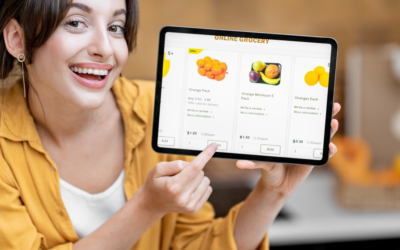B2C Marketing Strategies
A go-to-market plan is used when you have an amazing product that is prepared to be, well, launched. It includes all the following: partnerships, marketing, and distribution. However, developing a B2C market plan needs to be the first step in the development of your product. Because planning is essential to focusing on the most relevant aspects of your product strategy at the outset, it should begin there.
Business-to-consumer, or B2C, partnerships are direct; companies offer their goods and services to clients directly. B2C marketers, on the other hand, are typically rather busy attempting to advertise their business and draw in clients. To do that, though, it’s critical to stay up to date on emerging trends, technology, and other marketing initiatives that work.
A B2C marketing strategy aims to achieve the following:
- Increasing Brand Recognition
- Boosting engagement
- Developing greater leads
- Making consumer advocates
- Increasing revenue
- Increasing lifetime value, loyalty, and client retention
B2C Marketing Strategies:
1. Establish a personal connection with your clients:
Personalization may have been a perk a few years ago, but it’s now a must if you want to draw in new customers and keep your audience interested. Email, Blogs, Videos, and Website engagement all are methods to give your customer a personalized touch.
According to 75% of marketers, personalizing email content boosts engagement. There are many methods to do this. It has never been simpler to create personalized email campaigns that respond in real-time to consumer behavior, from dynamic blocks that change depending on each customer’s browsing and purchase behavior to automated flows that activate based on online and app activity.
Your audience on Top of the Funnel is looking for answers to issues, which presents you with a fantastic chance. You can show customers that you understand them better and establish market authority by producing blog and video content that addresses the subject at hand and offers workable answers to issues.
If a consumer visited your business, you would be able to know their face, recall the kinds of things they buy, and provide them with a more personalized shopping experience. Online buying doesn’t have to be any different with today’s technology. You can monitor clients and give dynamic product suggestions that are personalized based on past purchases and products viewed, with e-commerce providers such as WooCommerce and Shopify.
2. Consider going mobile first:
Given that marketer’s Insider Intelligence projects that mobile commerce will double in market share between 2020 and 2025, marketers must prioritize mobile-based commerce. It’s not enough to only think about desktop browsing when developing a B2C marketing plan; you also need to think about how effectively your content will function on mobile devices.
Although many e-commerce systems come with built-in mobile responsiveness, it’s crucial to verify that bespoke sites work as intended on mobile devices before launching. This also applies to email campaigns: material that is grabbed from a mobile device’s screen may easily destroy consumer confidence in a brand, whether it be on the web or in emails.
3. Make an SEO investment:
Paid advertisements are like a traffic signal—they work on social media and in search. The moment it turns green, traffic begins to flow through it. But the moment it turns red, the flow of traffic will stop. While SEO takes longer to get going, once it does, it may provide steady online traffic and brand exposure for years to come.
When compared with the rising expenses of sponsored social media traffic, SEO is an efficient, scalable approach to expanding your brand’s exposure and gaining new clients. B2C firms have an incredible chance to deliver relevant, targeted traffic to their website from customers looking for product information and problem-solving solutions thanks to SEO.
Through the development of a long-term SEO strategy centered on enhancing a website’s knowledge, credibility, and reliability, SEO may be utilized to promote steady and predictable site growth.
4. Make retargeting campaigns:
Add data-driven retargeting into your current marketing approach to provide customers who have abruptly bounced another opportunity to make a purchase. Try taking advantage of first-party data to create highly targeted and relevant ads. Retargeting’s ultimate objectives are to increase revenue, client reach, and retention.
B2C businesses frequently employ programmatic advertisements to increase their reach or retarget consumers with banner ads. These strategies don’t always work. Re-engaging lost contacts where they spend their time and in ways that seem natural on that platform is a better use of data.
Retailers may strategically integrate sponsored posts that display in-stream and retarget people who have connected with the brand elsewhere, such as the website, by carefully and systematically developing a brand image through social media. Social media offers the ideal platform for engaging and retargeting customers via their preferred channel on their terms. Becoming seen as a valuable addition to a customer’s social media networks and a trusted insider is the retailer’s ultimate objective.
5. Make use of influencer marketing:
Influencer marketing is a potent addition to any B2C marketer’s toolkit, but social media alone isn’t enough. Influencers are online content producers who have a sizable fan base that your audience is inclined to see as reliable people. To reinforce this strategy, increase brand reach, cultivate trust, and consistently produce new content.
Influencer recommendations are trusted by a majority of customers. In the age of B2C marketing, when social validation is important, collaborating with influencers lends your company the extra credibility it needs to remove the doubts of potential customers.
Influencers have large followings, which may include potential customers that your present marketing approach hasn’t been able to successfully reach. You may access these new market groups by collaborating with influencers, which can grow your audience and improve the visibility of your business.
Influencers who work with you are likely to provide content that highlights the variety of products offered by your company. You’ll have access to a wealth of new content with their consent, which you can use to engage consumers and foster trust through your marketing channels.
Wrapping It Up:
A B2C marketing strategy that is effective should be data-driven, customer-centric, and concentrated on providing value and fostering long-term connections with customers. Researching the market and analyzing consumer data, including demographics, past purchases, and internet activity, can help achieve this. Having a plan to attract, convert, and retain customers is crucial for e-commerce businesses, as online buying is both here to stay and will become more common. An effective B2C marketing plan must take into account the demands, tastes, and behaviors of your target market.





